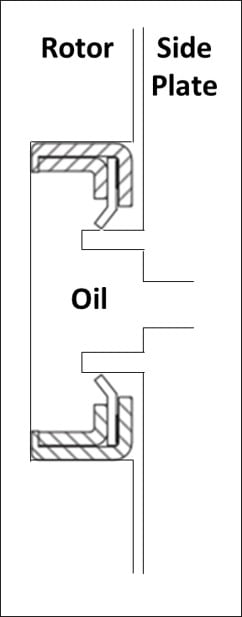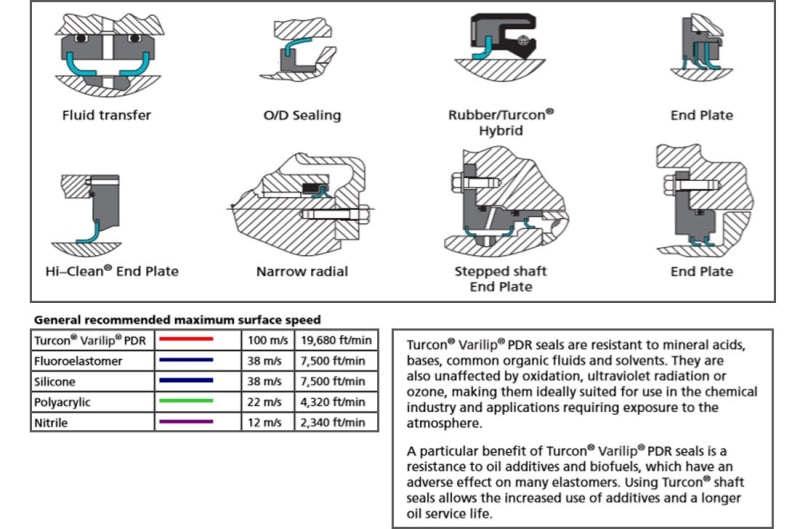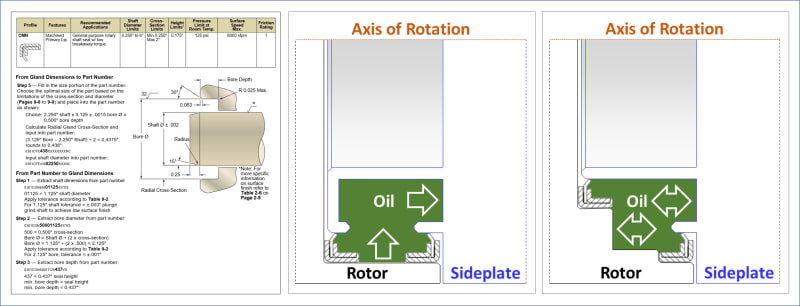RodRico
Automotive
- Apr 25, 2016
- 508
All,
I'm designing an engine that employs a rotor spinning between two stationary side plates. Oil is fed into the rotor near the center of rotation then exits near the rotor periphery. The oil return port has 0.14" diameter centered 2.9 inches from the rotor's axis of rotation. The maximum rotor RPM is 2626, and the oil flow rate is high but its pressure is low.
My original thought was to use o-rings, one with an outside radius of 2.83" and another with an inside radius of 3.6" to form a channel between the rotor and side plate with several return ports in the side plate allowing oil to return to the center axis of the rotor. Unfortunately, I calculate surface speeds that I believe to be incompatible with the use of o-rings that are compatible with hot (220F max) engine oil.
Radial space is at a premium.
Does anyone have any suggestions as to how best this interface should be sealed?
Thanks for any guidance you can provide!
Rod
I'm designing an engine that employs a rotor spinning between two stationary side plates. Oil is fed into the rotor near the center of rotation then exits near the rotor periphery. The oil return port has 0.14" diameter centered 2.9 inches from the rotor's axis of rotation. The maximum rotor RPM is 2626, and the oil flow rate is high but its pressure is low.
My original thought was to use o-rings, one with an outside radius of 2.83" and another with an inside radius of 3.6" to form a channel between the rotor and side plate with several return ports in the side plate allowing oil to return to the center axis of the rotor. Unfortunately, I calculate surface speeds that I believe to be incompatible with the use of o-rings that are compatible with hot (220F max) engine oil.
Radial space is at a premium.
Does anyone have any suggestions as to how best this interface should be sealed?
Thanks for any guidance you can provide!
Rod



